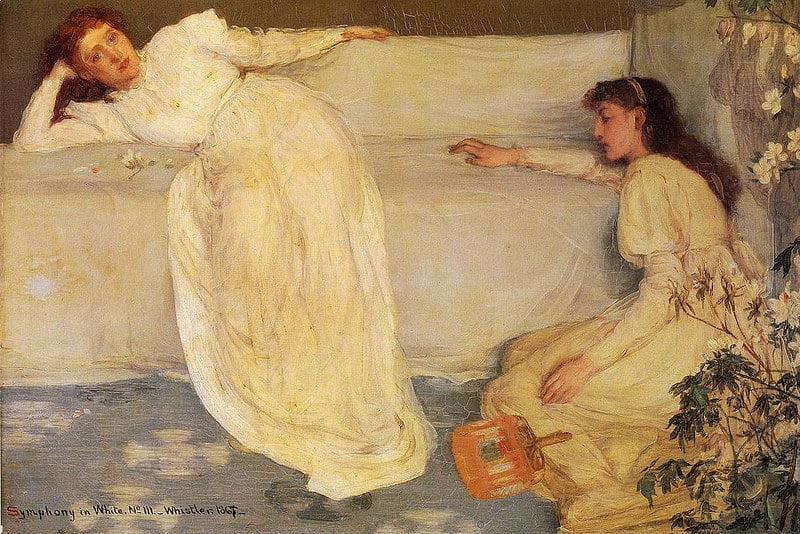Neurasthenia was a nervous condition in the 19th century. It is the predecessor of chronic fatigue. And it helped shape the way modern Americans think about health and happiness.
The condition was first described in 1869 by American neurologist George Beard. Symptoms of the condition included anxiety, migraine, insomnia, and depression. At the time, experts believed it is connected to overworking the brain and excessive stress by those in more demanding professional roles.
The condition was considered a bit discriminative at the time. Many believed only those in demanding professional and business roles could be affected.
Today, we have a condition with the similar symptoms. We call it chronic fatigue syndrome. You can also attribute the symptoms to low thyroid functional and nutritional deficiencies. Back then, medical experts did not know these conditions existed. Therefore, they called it neurasthenic. Diagnosis of the condition began to decline following World War I. Doctors considered it an umbrella team, meaning the symptoms can apply to different mental and physical illnesses.
Symptoms of the condition
Back then, medical experts explained the condition as a result of exhaustion of the central nervous system’s energy reserves. Beard, the doctor who described it first, attributed the symptoms of modern civilization. He and his followers thought the stress of urbanization and stress suffered in a competitive business environment caused the condition.
![]()
Freud named a couple of physical symptoms. Those include fatigue, dyspepsia with flatulence, and indications of intra-cranial pressure and spinal irritation. Freud went a bit further, saying that the condition is caused by non-completed coitus.
Diagnosis
Before 1869, there were zero cases of neurasthenia. But after George Beard wrote about it, doctors began diagnosing patients with it. In fact, it became a popular diagnosis, expanding to symptoms such as weakness, dizziness, and fainting. The common treatment was rest cure, especially for men. Fun fact: men were the gender primarily diagnosed with the condition.
Contemporary experts say that Virginia Woolf probably had neurasthenia. She was forced to have rest cures frequently. She describes these rest cures in her book “On Being Ill”.
Treatment for the condition
In the beginning, Beard and his partner A.D. Rockwell recommended electrotherapy for patients. Then, they recommended other experimental treatments. In a 1868 review, their claim for a scientific method was suspect.
In 1895, Sigmund Freud reviewed electrotherapy and declared it a “pretense treatment”. He emphasized that you can be stronger the more you push your own pain into the background.
During World War I, “shell shock” was the common treatment.
How the Disease Shaped the Way we Think about Health
The question back in the 19th century was how can Americans stay healthy while struggling with the demands of the modern life. That was the central question regarding neurasthenia in the late 1800s. Today, the same can be said about stress. Both conditions are vague concept. They are so flexible, and both are grounded in reality but invoked in many different ways.
In the 19th century, a prominent medical theory was that the human body was like an electrical machine. People believed they were powered by energy distributed through the nervous system. The unfortunate byproduct was that people spent too much of this nervous energy. When it was depleted, they got sick, and the condition was called neurasthenia.
The nature of the sickness was vague and all-encompassing. Same as stress today. Therefore, doctors gave the diagnosis to people suffering from a variety of mental and physical illnesses. Sometimes, they even gave it to people with no clinical condition by modern standards
What neurasthenia did was take age-old problems of happiness and comfort, and turn them into a medical term. Other conditions like melancholia also treated happiness as a health issue. But neurasthenia did it at a time modern medicine was emerging. It gave the condition a more scientific weight.
What was even more interesting is that “it could only have happened in America”. It had a certain American flavor. Some scientists even called it “Americanitis”.
Neurasthenia was a disease of culture as much of the mind and body. Beard thought that people in earlier societies could not have been affected. They weren’t exposed to modern things that depleted the nervous system, like steam power, the science, telegraph, and the mental activity of women.
We said at the beginning, that the condition was also discriminative and privileged. White people, Protestant, and Northern privileged, they were diagnosed with the condition. Beard offered racists explanations why blacks and Native Americans cannot be affected. He said the condition is because of energy activity, not physical activity. He argued that blacks do not overuse their mind.
![]()
The cure, for men, was the frontier. Doctors sent men to ride horses, do pushups, rope cattle, or even slap each other’s butts until the sheer manliness restored their nervous energy. Fun fact: the condition helped Teddy Roosevelt became a president. He had a reputation as a dandy, and people called him names like “Young Squirt”. His neurasthenia was an effeminizing sickness. Because he got the “manliness” cure, he became buff and tough. That is what helped him became the 26th president of the United States.
For women, the go-to cure was rest. They were confined to bed for four to six weeks. Physicians controlled every aspect of their lives. Women were spoon feed milk and soup. They were not allowed to read or move themselves.
The condition shaped so many things. But the true legacy of neurasthenia is how we talk about health and happiness. Self-help books nowadays that bring promises of being happy, yoga classes offering inner peace, those are all thanks to the condition.



